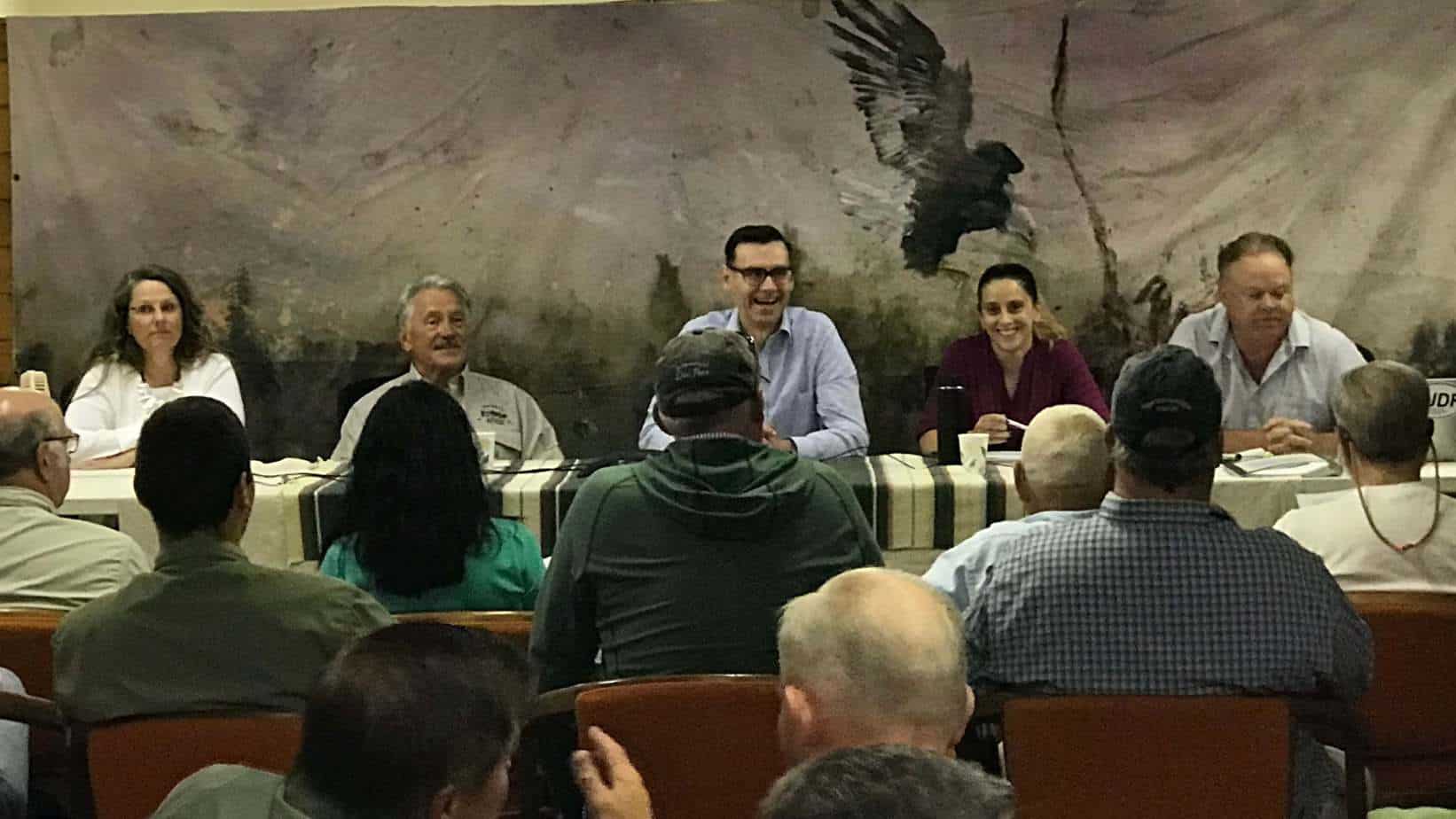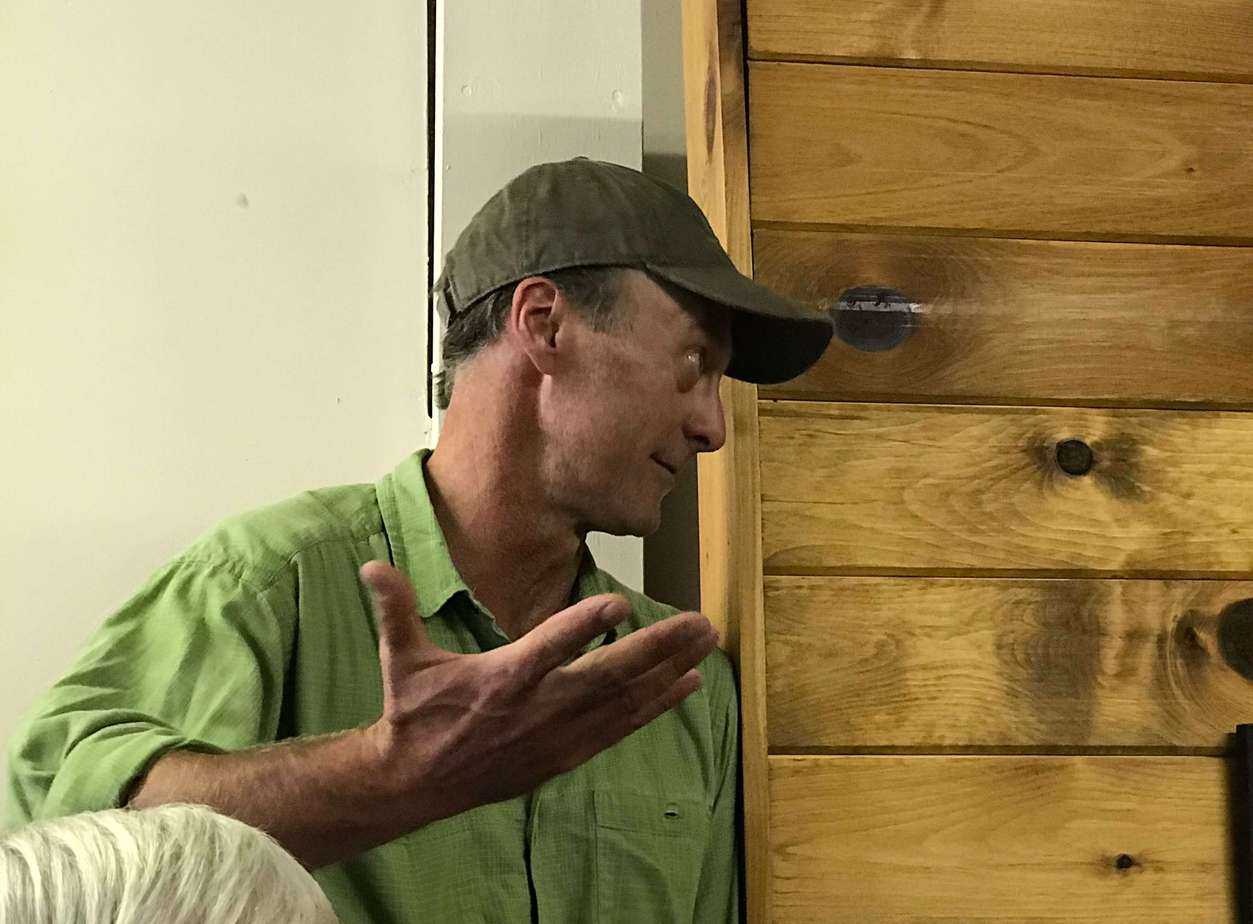Finding the Goldilocks solution: Getting the temperature just right in the Delaware River

Way up north, in the upper upper Delaware, a high-stakes balancing act takes place almost every day in the summer as New York State's Department of Environmental Conservation calculates just enough water to keep the river between Hancock, N.Y., and Lordville, N.Y., a few degrees cooler than it might be.
The first priority for those reservoirs (and for New York City's Department of Environmental Conservation) is to ensure the city has enough water, but those reservoirs are pretty big and some of that cold water can be used to cool down the warming river. But those reserves are not endless.
This balancing act is vital to the trout population in the river, the anglers who come to fish for those fish and the communities that have seen some rare economic good news from those fish.
But this balancing act reveals deep tensions, fissures even, in how we use the Delaware River, a vital resource for four states: New York, New Jersey, Pennsylvania and Delaware. This balance has been at the center of discussion (arguments mostly behind closed doors) for decades with various complicated plans enacted with varying degrees of success.
In the 1950s, New Jersey saw the development of those New York City reservoirs as a threat to the water supply that New Jersey drains off the Delaware, so it took New York State to court -- the U.S. Supreme Court (when states argue, they do so in front of the nation's highest court).
That court created a target flow that New York City must meet.
That target ensures that enough water flows downriver to meet New Jersey's needs, but also answers Pennsylvania's (Philadelphia, actually) need for the fresh water flow to be strong enough to push back the salt water that the tides bring into and up the estuary. Philadelphia gets some of its water supply from the Delaware and those intakes must not suck up salty water, which would damage the water infrastructure.
The U.S. Supreme Court also created "decree parties." Simply put, those parties which are, together, responsible for carrying out the mandates of the court. Those parties include the four states and New York City. The court mandates can be changed but only by unanimous agreement.
The trout in the upper river have no idea how complicated their well-being is.
There are further complications in that there are three types of trout that live in the upper river's watershed: Pennsylvania's state fish, the brook trout, is the fussiest, needing cooler waters (temperature averages from 55 to 60, and high dissolved oxygen to breed and thrive). Brown and rainbow trout can tolerate higher temperatures, as high as 75.
And 75 is the target that's been agreed on by the significant players in the upstate fishing balancing act. At least for now. There is evidence that suggests trout get stressed as soon as water temperature goes above 68. Trout anglers will always want to get water temperatures cooler to make their game fish as comfortable as possible.
This plan is called "Simple 75." It asks the reservoirs -- specifically Cannonsville -- to release enough water to keep the temperature at Lordville at 75, or lower. Lordville is nine river miles south of Hancock, where the main stem Delaware River begins -- where the two branches of the upper river meet. Trout fans -- and those upper river businesses that rely on those fans -- would like to see that temperature extend all the way to Long Eddy, N.Y., another six river miles downstream.
But that would require more water to be released from Cannonsville, and at this stage there's a strict limit as to how much water the decree parties have allocated to support the trout population. It's called a bank of water, and NYC is only responsible for releasing up to that bank of water and no more in any year as agreed to by the decree parties -- and trying to get the decree parties to agree on a new, increased amount would likely scuttle the whole project.
On warm summer days -- and nights -- water needs to be released often to keep that temperature at 75, and there's a risk of running out of water from that reserve. Once the "bank" of water set aside for thermal mitigation (which is what using cool water to lower the river water's temperature is called) is used, there's no more.
"We want to use it as we need it," said Jeff Skelding, the executive director of Friends of the Upper Delaware, which serves as a meeting ground for many of the interested parties. He knows there's a risk of running out of that water but believes it does the trout, and therefore the anglers, more good to use it up rather than keeping it.
On July 10, the FUDR was not just a figurative meeting ground. It hosted a panel to talk about this new rule -- Simple 75. Although it's still a proposal, the reservoir water is already being used to keep the temperature to 75.
"And it's working," said Skelding, pleased that this compromise is working, at least so far, especially with the very warm weather they're having in the upper river. So this plan is a beginning, but only that.
The room was full of informed, opinionated anglers, who are, shall we say, not predisposed to welcome the actions of either the NYC DEP or the NYDEC.

The panel included Mark Klotz, director of the Division of Water for New York State's Department of Environmental Conservation, which is not to be confused with New York City's Department of Environmental Protection.
Jen Garigliano, chief of staff, Bureau of Water Supply, represented the NYC DEP.
Amy Shallcross represented the Delaware River River Basin Commission. She's its manager of Water Resource Operations. The DRBC plays a role in these negotiations for its expertise but this issue is not, strictly speaking, the DRBC's responsibility.
The DRBC is the four states in the watershed and the federal government. The decree parties are jointly responsible for flow issues. Those are the four states and New York City. Yeah, it does get confusing.
And Skelding joined those folks as the moderator.
Scattered in the room were others who have worked on this issue, members of the Subcommittee on Ecological Flow. More on that committee here.
The SEF, as it's known, has been charged with figuring out two significant pieces of the balancing act.
The first is this one, thermal mitigation. The second is how to manage the Rapid Flow Change Mitigation Bank -- translation: How can the reservoir help provide more water and then less water gradually so there aren't sharp increases or decreases in the amount of water in the river. The goal is to imitate a more natural rise and fall in water depth.
But this day was all about thermal mitigation.
"These issues are very charged. It's about our river, our fisheries, our water. And it leads to emotionally charged conversations," said Skelding.

Peter Kolesar, emeritus Columbia University professor, had dozens of slides to show when temperatures rise to dangerous levels (for trout).
Kolesar is a statistics expert and has studied the issue of flow in the upper river and has been involved in the development of the many different plans to address the problems over the years. From those slides, it wasn't hard to see what and when the problem occurred.
As the meeting progressed, there was certainly interest and some frustration -- after all, Cannonsville Reservoir looks like it holds an enormous amount of water, and some question why New York City has to be so stingy with its releases.
Skelding stressed, as did Klotz, that the amount of the bank is set. How it's used is the focus of the various committees and this meeting.
"We have a set amount of water in the bank," said Klotz. "It's a fixed quantity. Don't expect more water."
That's true for this year. Previous protocols set the limit for the bank at 2500cfs and that's the limit that the plan calls for this year. But as part of the re-working of previous plans (called Flexible Flow Management Plans) and its update this year, this protocol is for a one-year trial period.
"The conservation community will always be working to modify and improve the protocols," said Skelding, "despite the Herculean effort that will always require."

After the meeting, Brett Lorenzen, an environmental lawyer and angler, was optimistic about the plan: "It's simple for everyone to understand -- anyone can just stick a thermometer in the water at Lordville and see for yourself.
"This is a new direction. They looked at all the past practices and recognized that some things weren't working and they got rid of them. It's a start. Lots of parties are coming together to improve the overall management of this important resource.
"We (the trout-fishing community) share the future of the river with everyone else who has a stake in the river."
